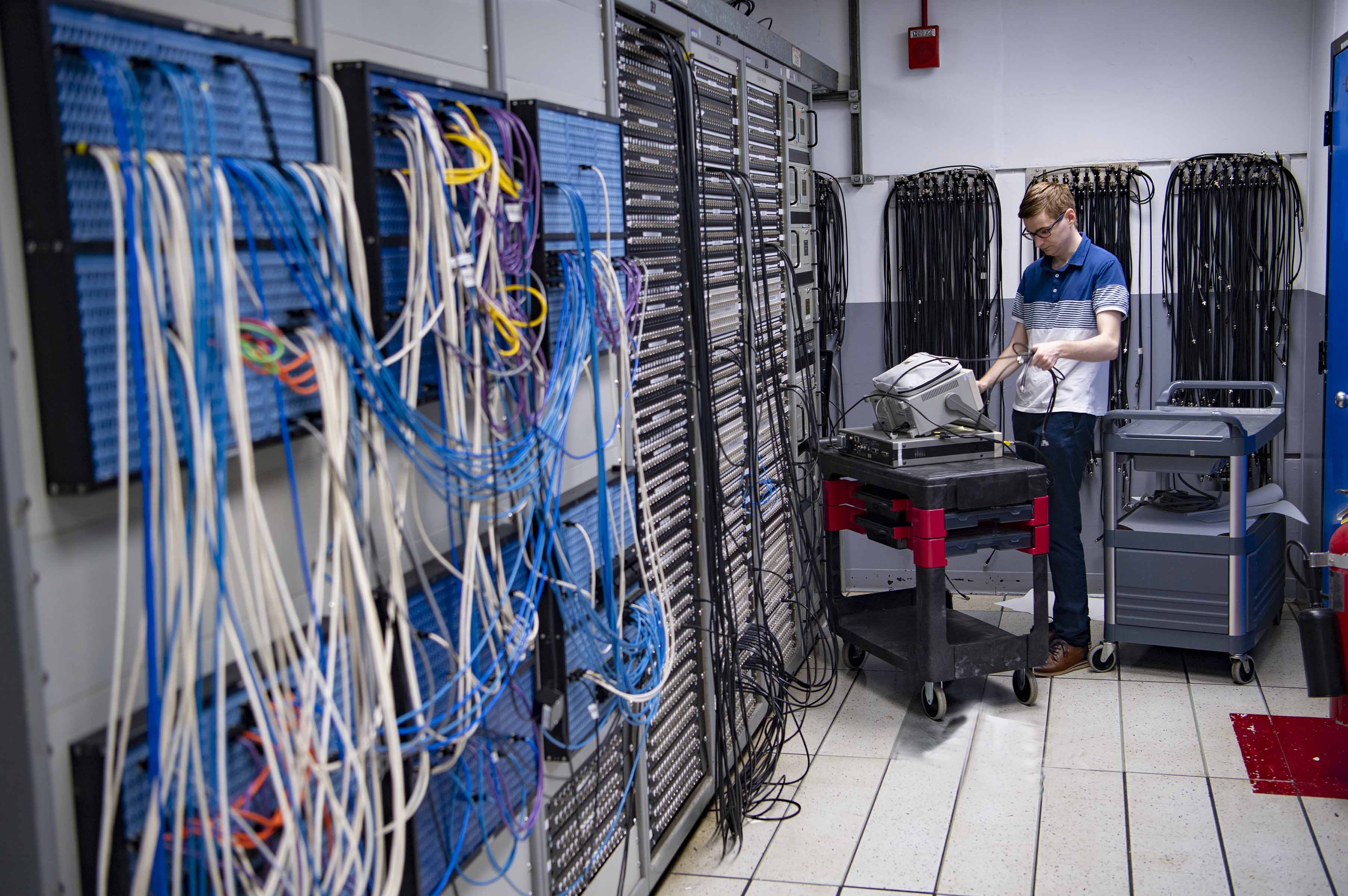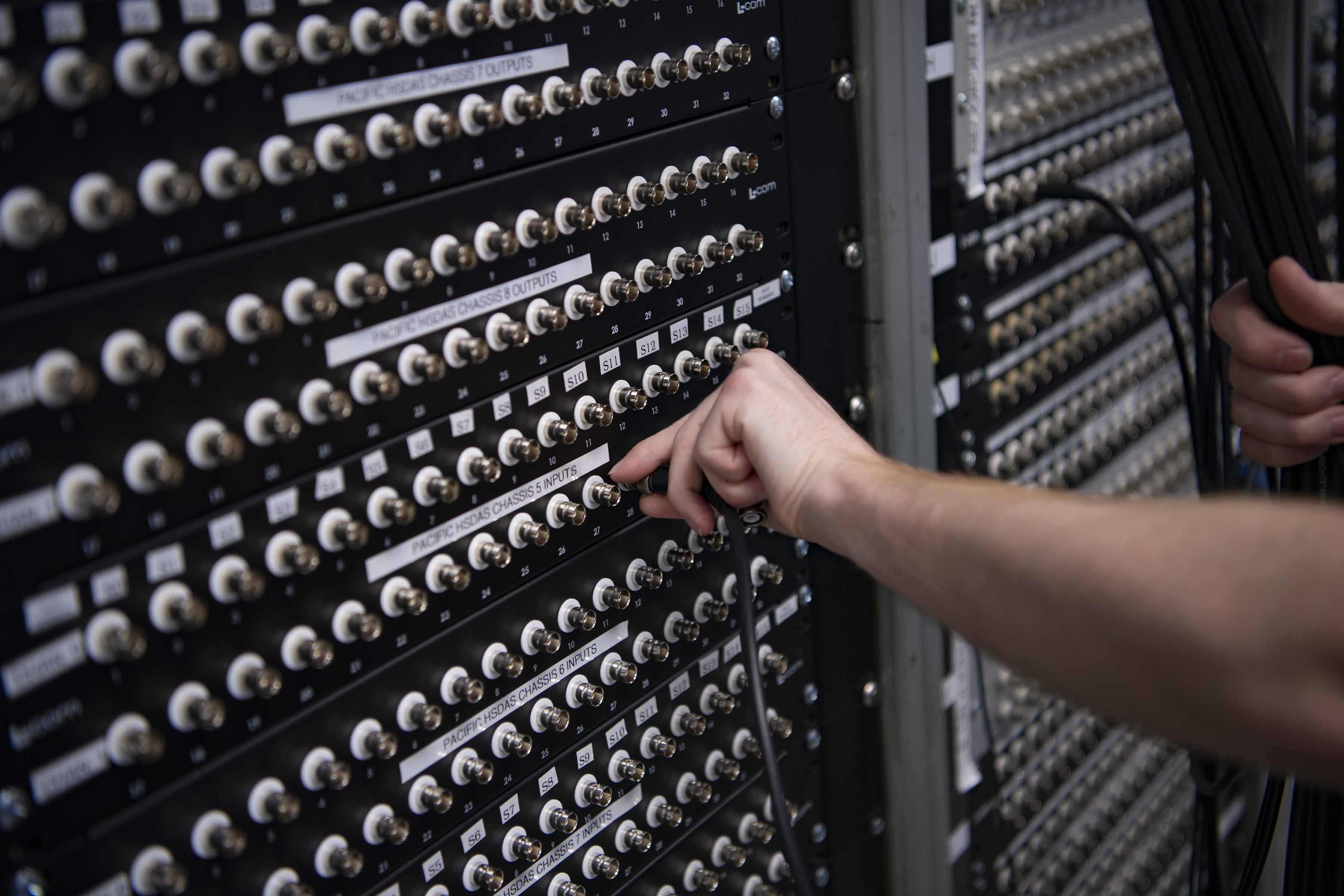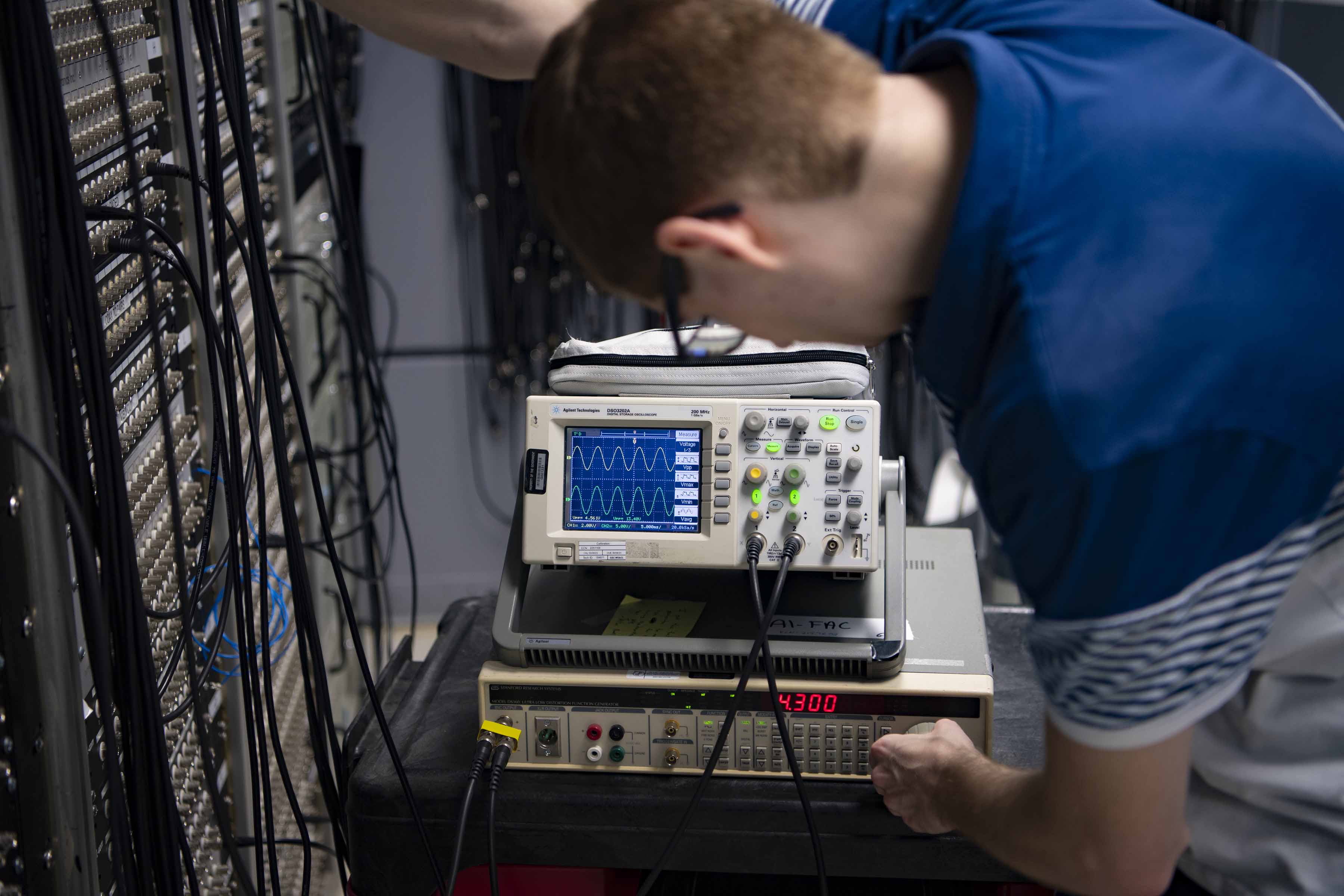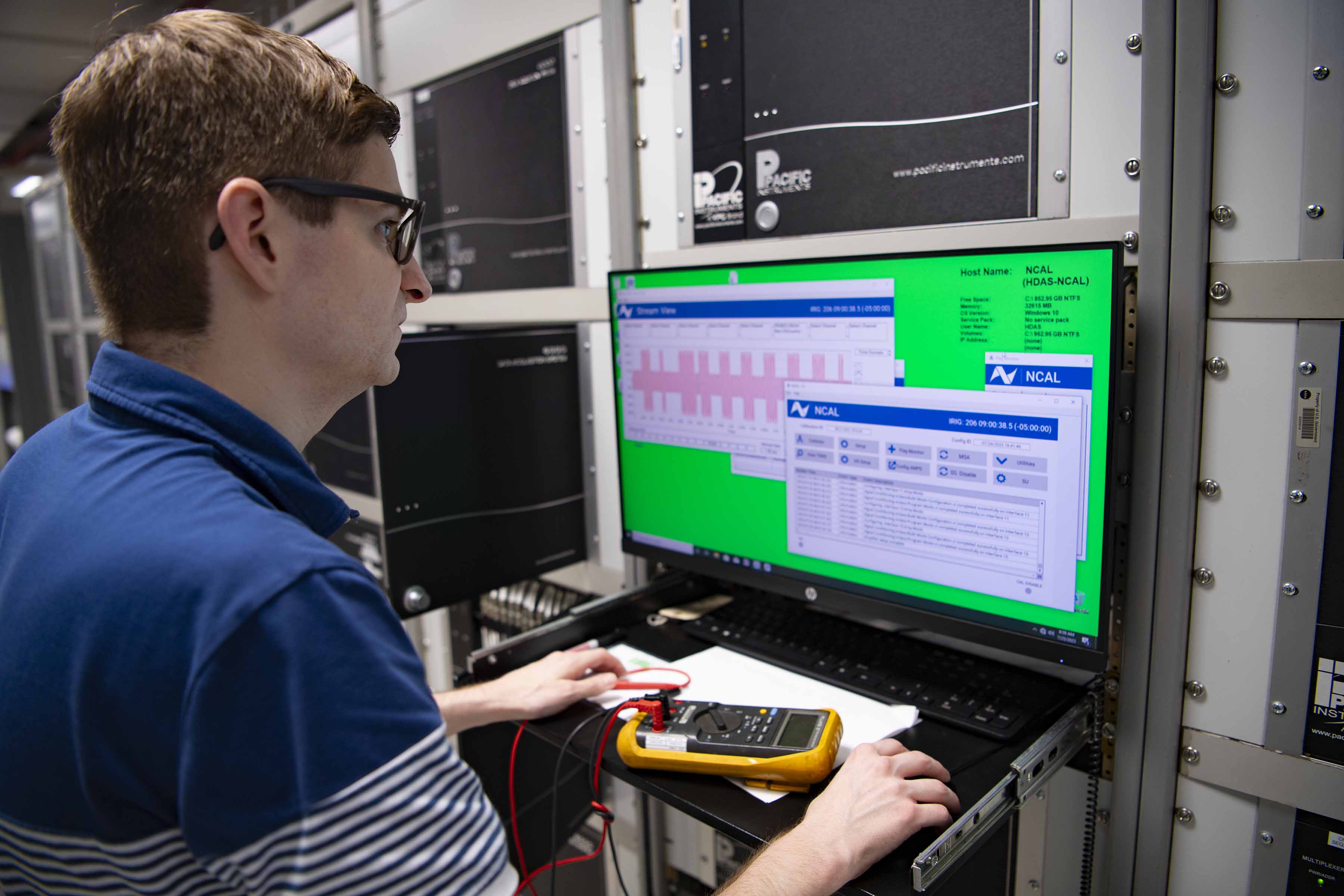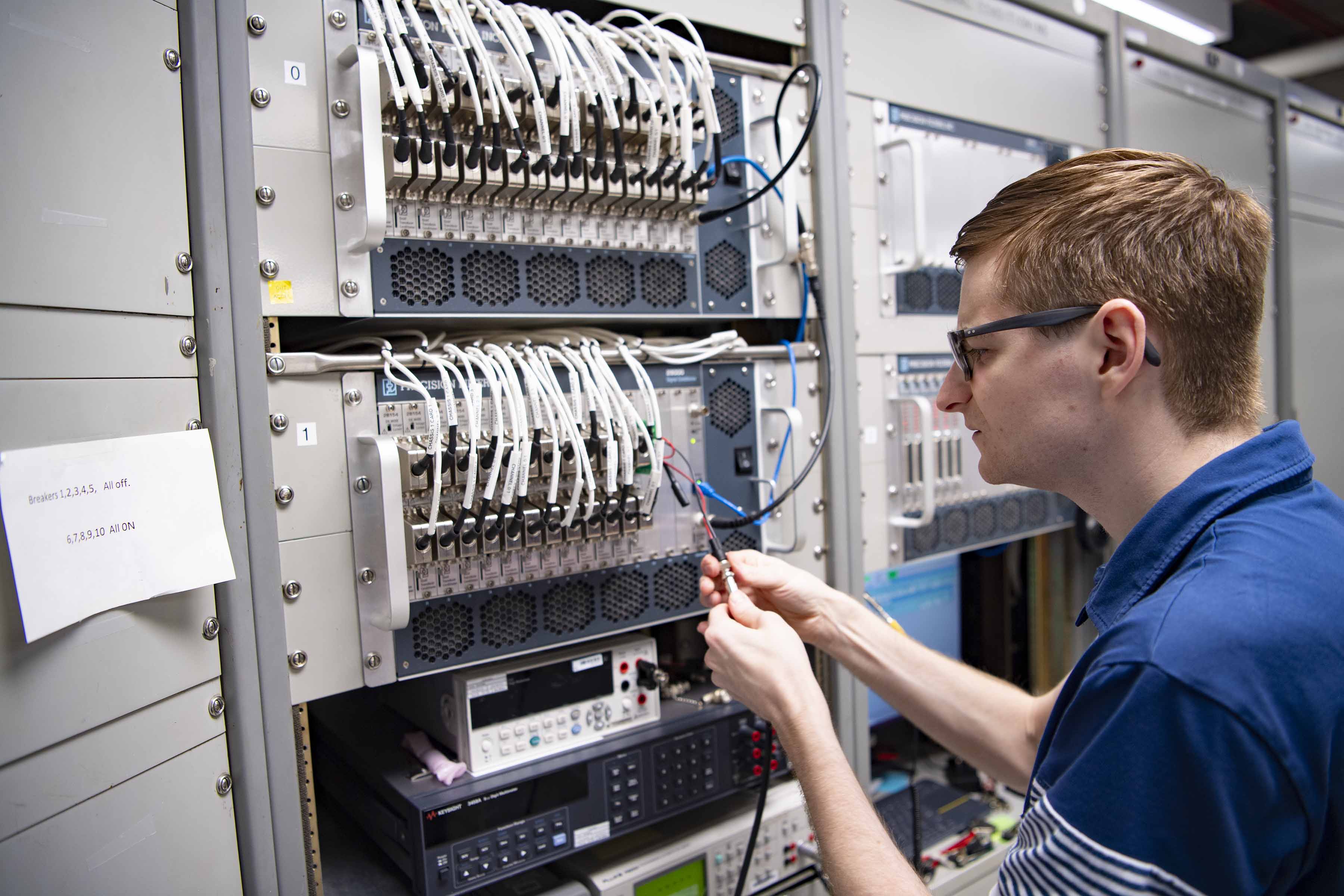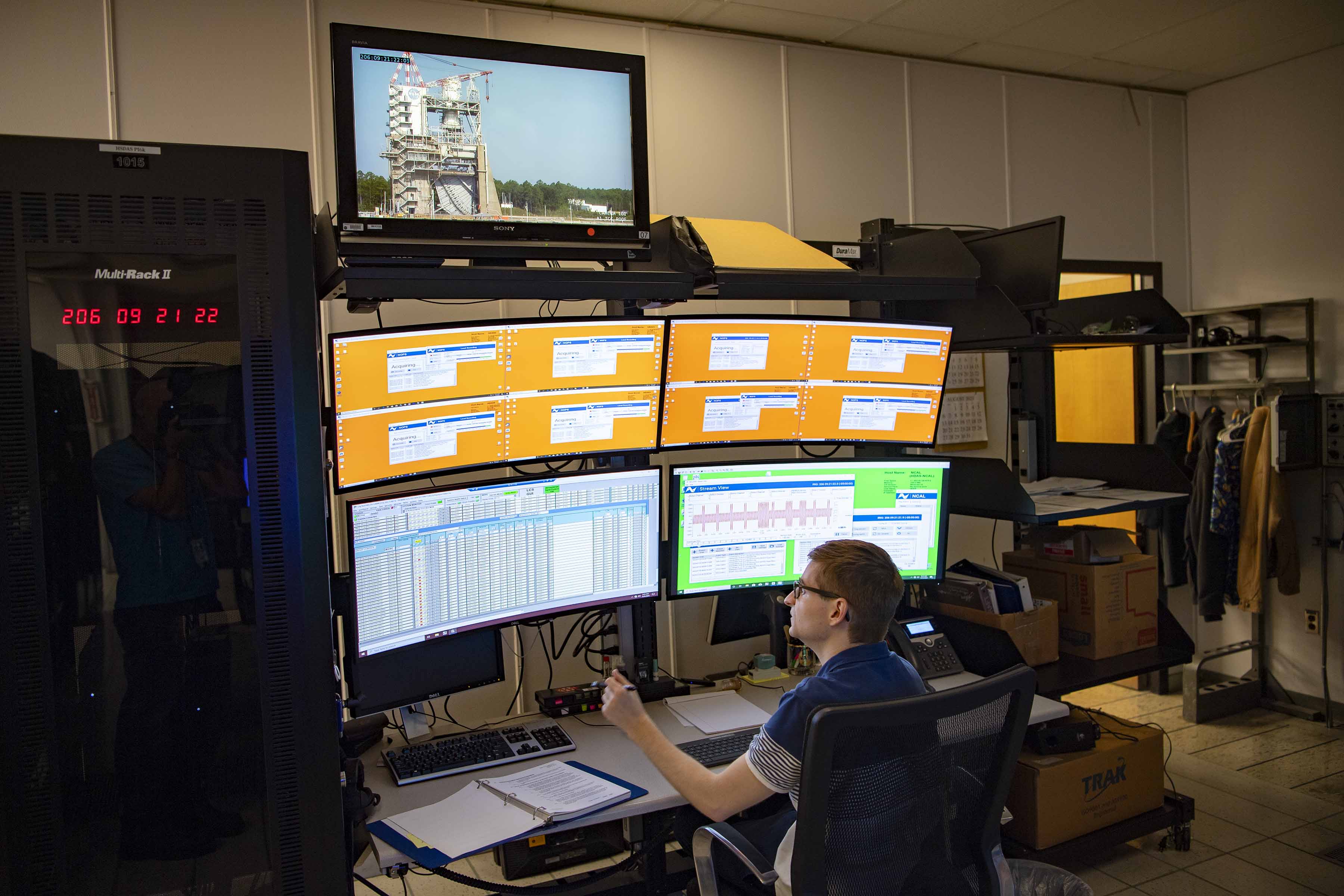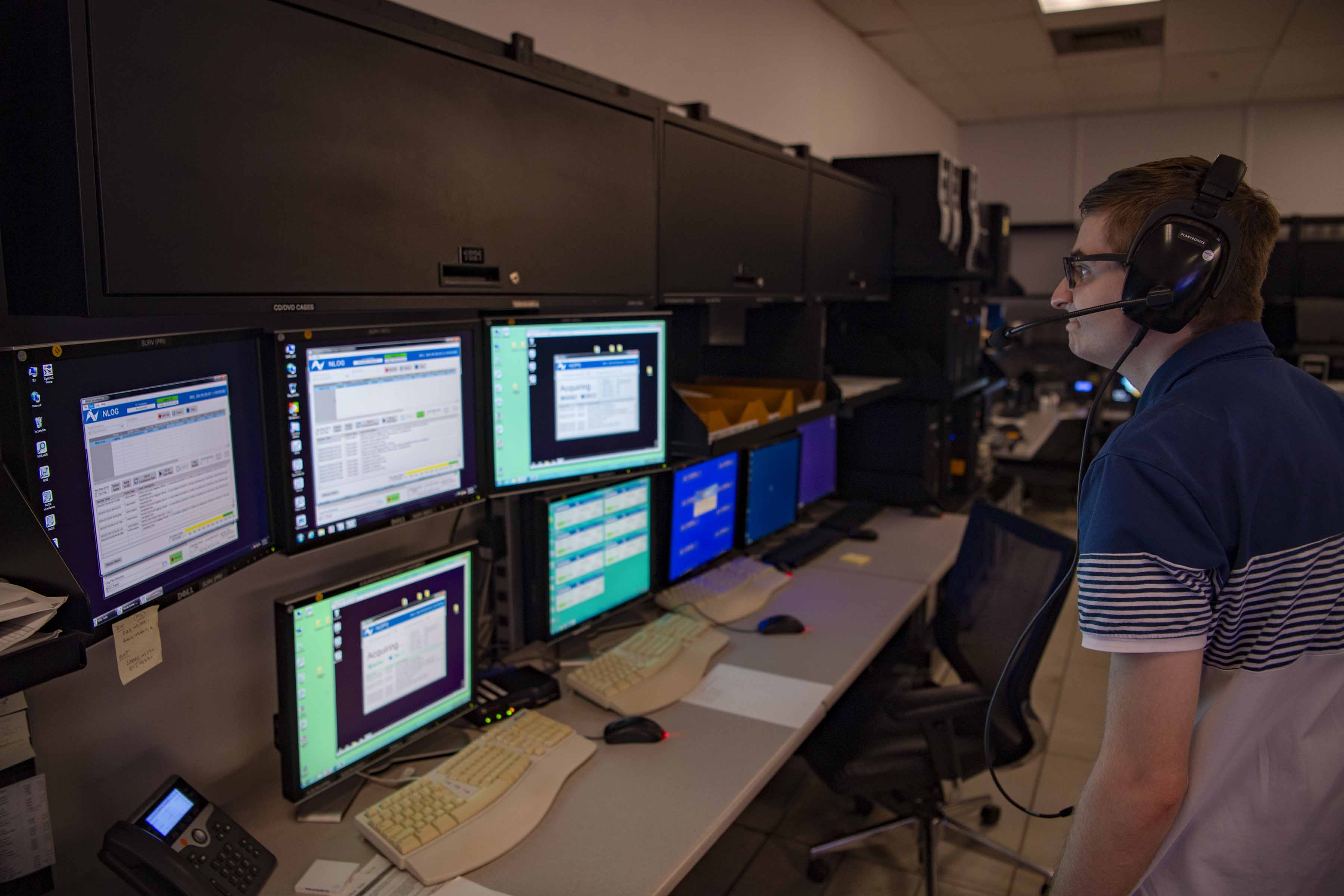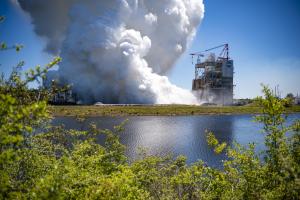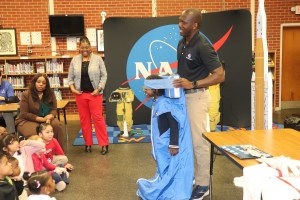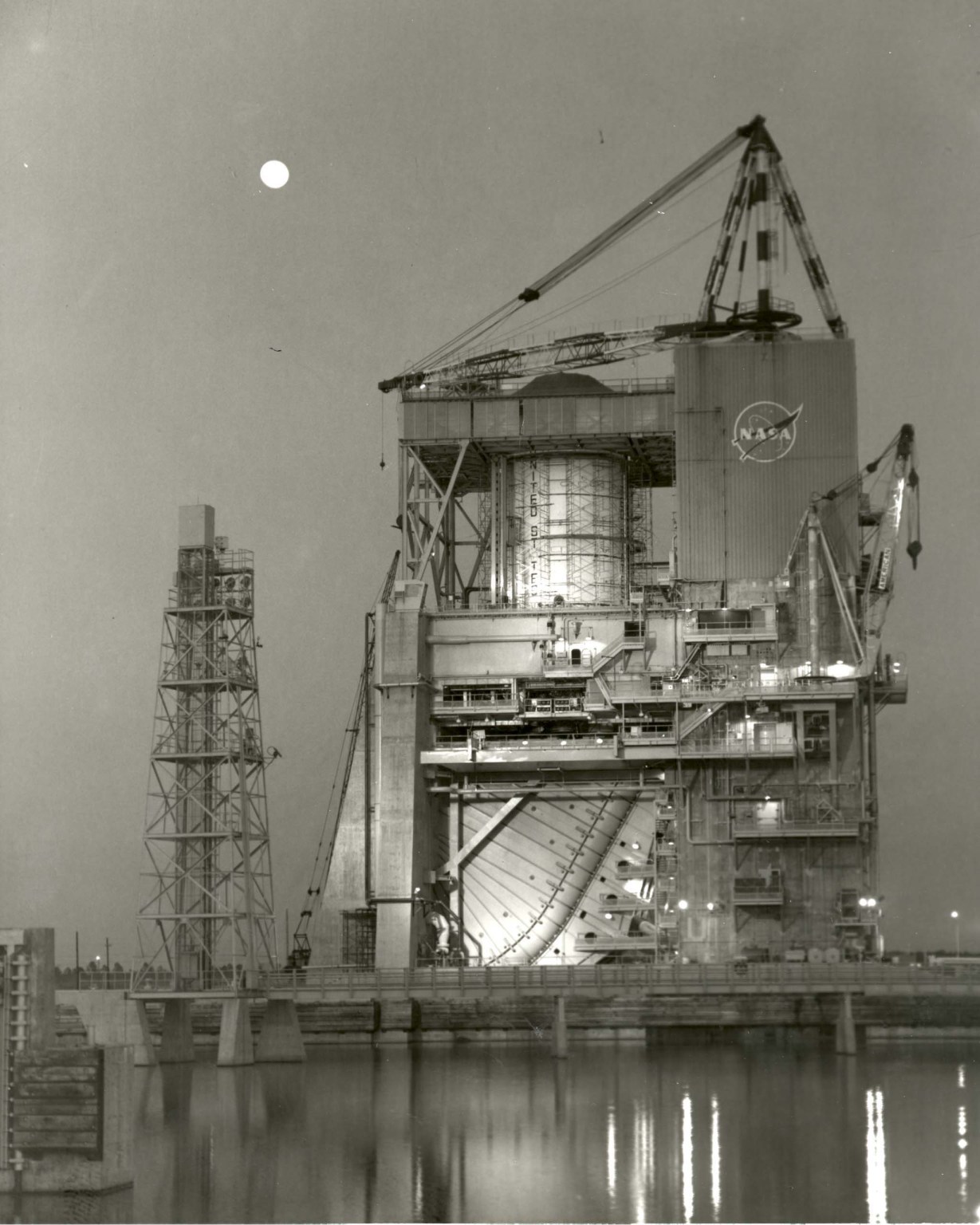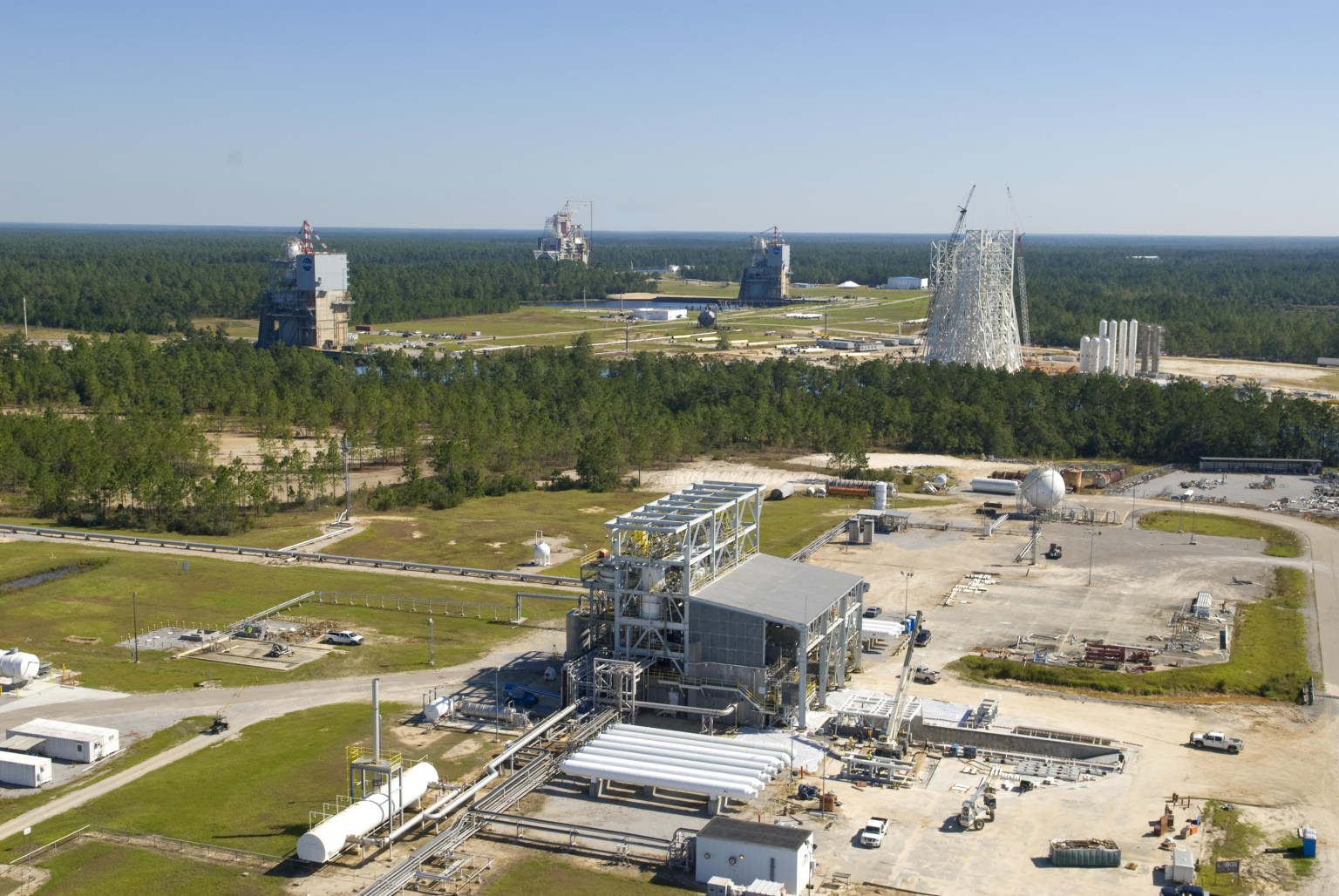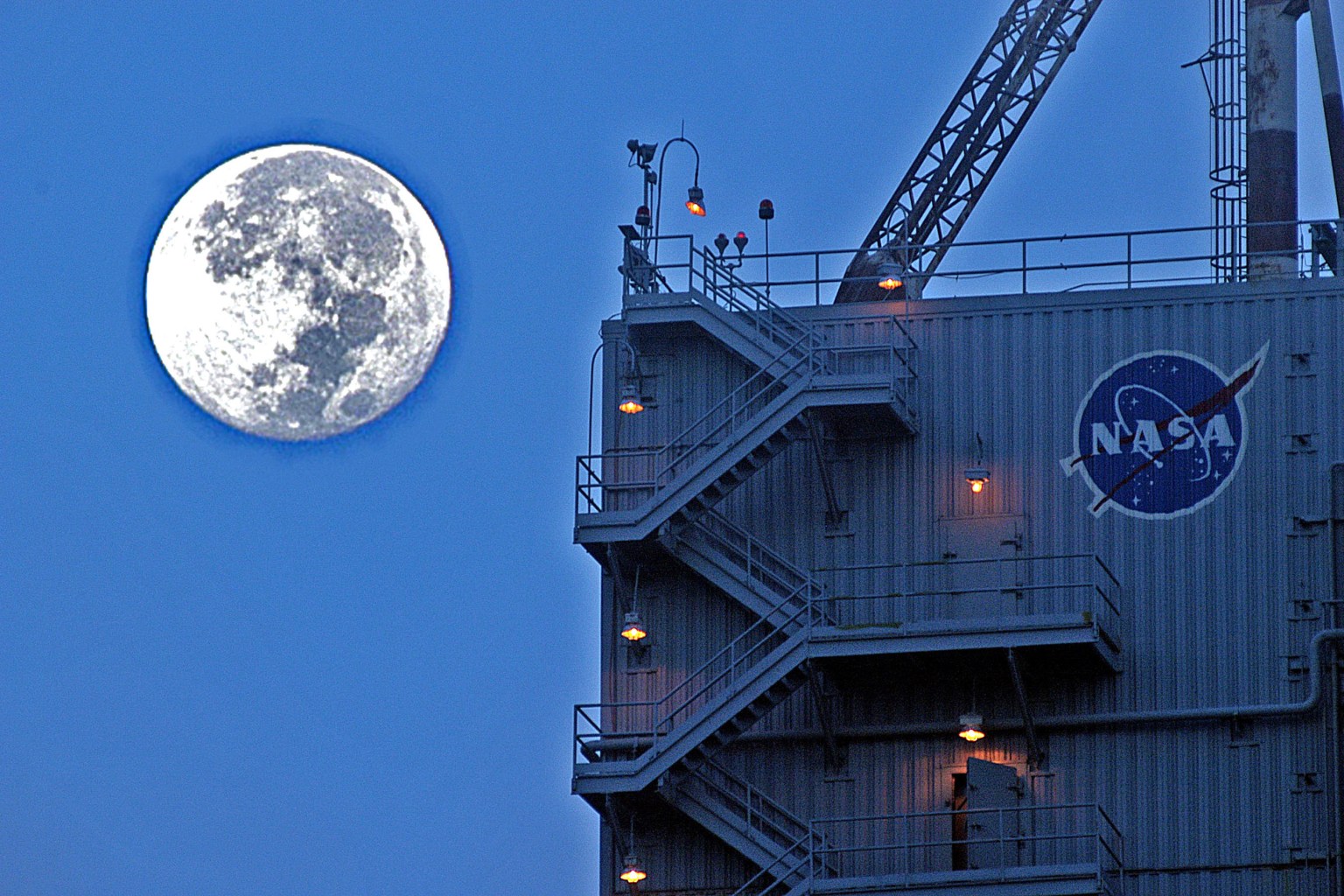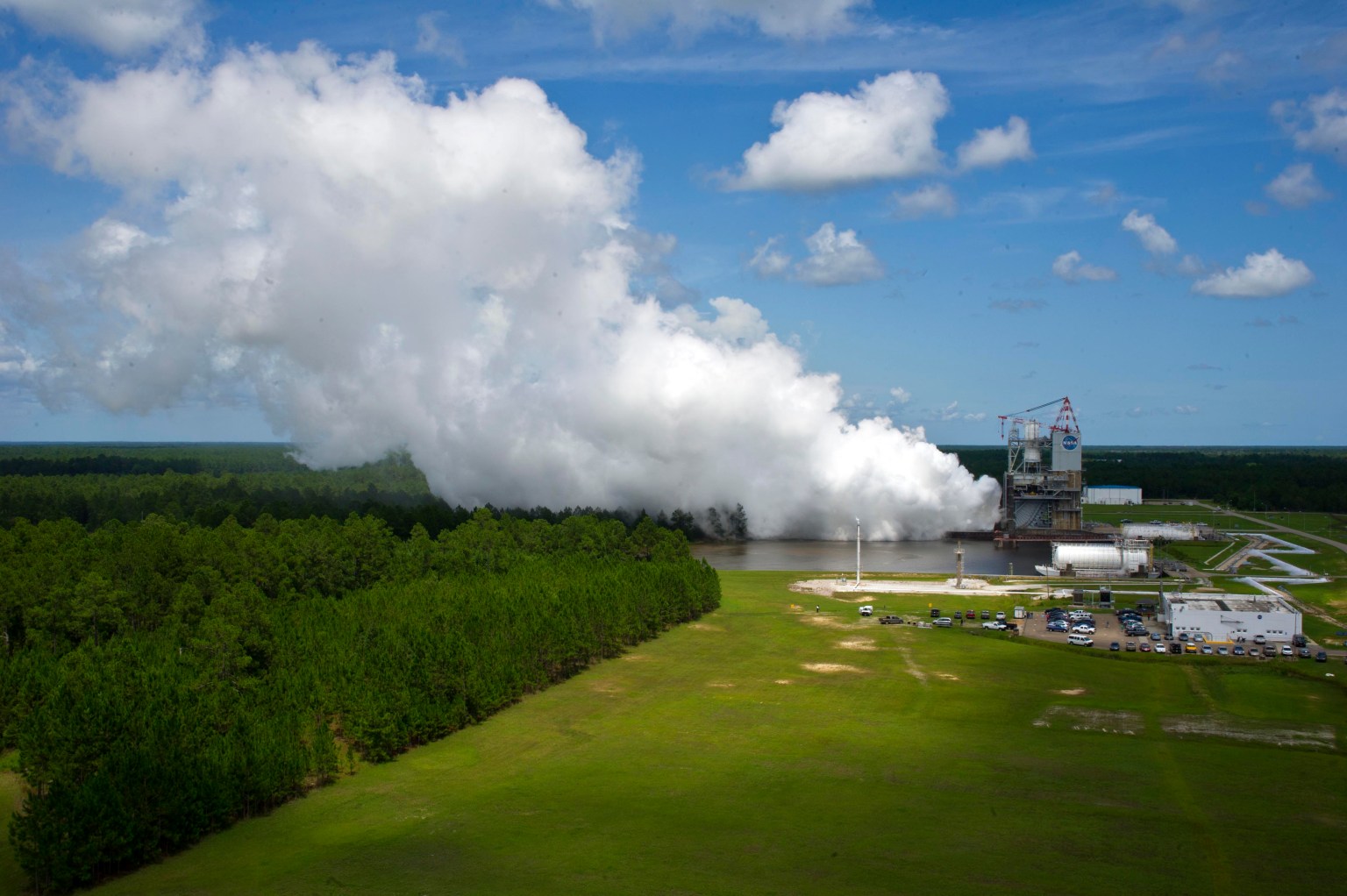Viewing an RS-25 engine hot fire is a visceral experience – ignition sounds like thunder, the ground shakes, a steam cloud billows – but a central reason for conducting a test is much less observable to viewers.
NASA tests engines at the agency’s Stennis Space Center near Bay St. Louis, Mississippi to fully understand their performance capabilities and limits. For RS-25 engines, that means capturing mountains of data as operators simulate how the engine must fire during launch of NASA’s powerful SLS (Space Launch System) rocket.
Sensors gather data on every aspect of an engine’s operation during a typical 500-second RS-25 hot fire. Engineers use the data to confirm expectations and expand understanding of an engine’s performance.
“NASA Stennis provides lasting proof that the new RS-25 design meets its performance requirements from the data we collect using multiple acquisition systems at the Fred Haise Test Stand,” NASA instrumentation engineer Tristan Mooney said.
Data collection is especially critical as NASA works to certify lead engine contractor Aerojet Rocketdyne, an L3 Harris Technologies company, is ready to produce new RS-25 engines for Artemis V and missions beyond. Artemis missions to the Moon, and eventually Mars, are an important part of the agency’s commitment to explore the secrets of the universe for the benefit of all.
Four RS-25 engines help launch each SLS rocket. NASA and Aerojet Rocketdyne modified 16 remaining space shuttle main engines for use on Artemis missions I through IV. Aerojet Rocketdyne is manufacturing additional engines, incorporating dozens of improvements in its production process. It plans to employ new manufacturing processes and techniques, including 3D printing, designed to more efficiently produce the engines.
A pair of certification series at NASA Stennis, using production prototypes, are demonstrating the high performance and reliability of the new engines. The initial series of 12 tests concluded in June. The second series of 12 tests is set to begin Oct. 4 and extend into 2024. Based on the data collected and analyzed from the two series, Aerojet Rocketdyne will shift to full production mode for new engines.
A team of employees from NASA, Aerojet Rocketdyne, and site contractor Syncom Space Services support acquisition of data on test day. Every aspect of engine operation is measured. Depending on test objectives, crews sometimes modify hundreds of sensors from one hot fire to the next. Recent upgrades to the data acquisition system save significant time during these setups and also reduce the potential for human error.
The amount of data collected is staggering – engineers who have worked at NASA Stennis for decade, say the redesigned RS-25 engine is one of the more heavily instrumented engines they have seen.
When it comes to collecting data, up to 256 channels record 102,400 datapoints per second each, while up to 512 low-speed channels record 250 samples per second each. For a 500-second test, a combined 13.17 billion datapoints can be collected if all channels are transmitting.
Test stand video systems contribute around 10 terabytes to the collected data. The overall amount would easily overwhelm an ordinary computer hard drive.
Once a hot fire is completed, engineers process and forward data for analysis. Subsequent reviews at NASA Stennis, NASA’s Marshall Space Flight Center in Huntsville, Alabama, and Aerojet Rocketdyne provide a better understanding of the engine’s capabilities.
As NASA Stennis conducts certification hot fires for new RS-25 engines, the data will help the agency safely send astronauts on future Artemis missions. Through Artemis, NASA will send the first woman and first person of color to the Moon. The agency will use what is learned at the Moon to take the next giant leap of sending astronauts to Mars.
C. Lacy Thompson
Stennis Space Center, Bay St. Louis, Miss.
228-363-5499
calvin.l.thompson@nasa.gov



























